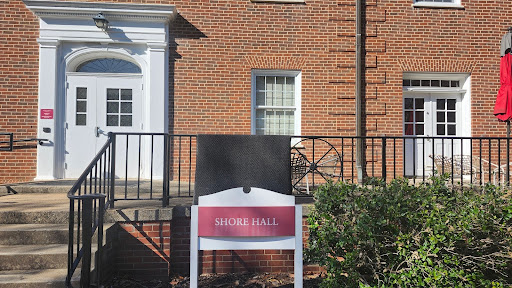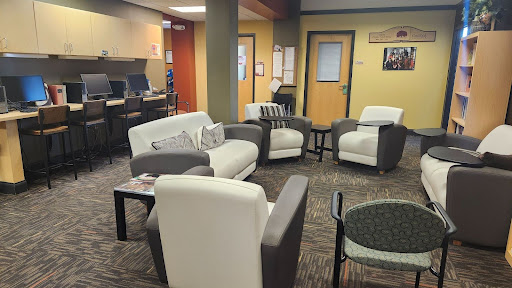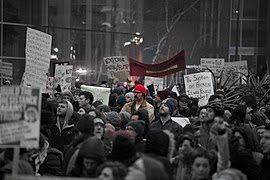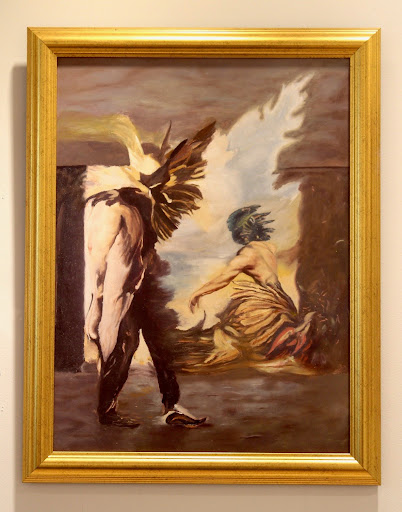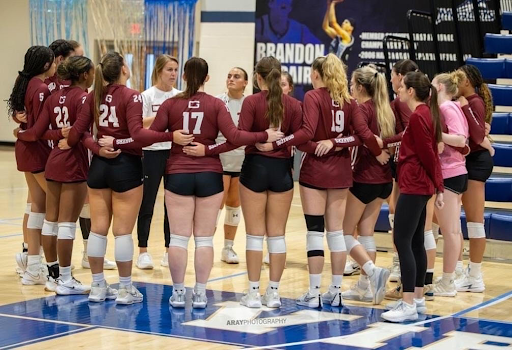On Thursday, Nov. 9, the screen of the Tanger Center in downtown Greensboro filled with a video taken in Ukraine in 2022.
A group of civilians and journalists, including photojournalist Lynsey Addario, are fleeing war-struck eastern Ukraine to safety. One man steps out tentatively onto a street, a designated civilian evacuation route, looking left and right before beginning to cross.
He is then thrown to the ground. The video camera drops, but not before capturing what happened: a mortar just slammed into the ground, a dazzling blast of fire and rubble erupting upon impact.
The camera, from its seat on the ground, records the chaos. Civilians and aid workers seek shelter behind the flimsy walls, an adventurous few going into the street to investigate the crater left by the blast.
Addario is among those who rush into the scene, her camera–weapon of choice in fighting oppression and conflict worldwide–at her side.
She relayed to the packed auditorium in downtown Greensboro, thousands of miles removed from the war in Ukraine, that what she saw still fills her with grief. A pair of child’s snow boots, covered in dust and blood.
There are four bodies in the street. They are surrounded by suitcases and a cat carrier. The bodies are not wearing uniforms; they are wearing their winter gear, jackets and snow pants.
Three adults, one child. Dead. Addario snapped a photo.
“It was on The New York Times front page the next day,” she said.
The Russian army has just shelled civilians. Addario’s photos broke the story.
She has been to Ukraine nine times since the war began in February, 2022. She has documented the devastation of the war, focusing most on the impact on civilians. However, she has spent two decades prior traversing the world, photographing conflicts in Afghanistan, Libya, Iraq, Sierra Leone and dozens of other countries worldwide.
Hundreds gathered in the Tanger Center to hear Addario, featured in the Bryan Series, speak about the power of photography in combating violence. She told countless tales to demonstrate this power, summarizing a career dedicated to bringing light to the suffering caused by war.
A picture flashes on the screen. Two Afghan women, their jewel blue burqas blazing across the sky, stand on a cliffside. Addario never published that picture because she changed the story: one of the women was pregnant, and her husband’s car had broken down en route to the hospital. Addario offered them a ride, and the woman gave birth to a healthy baby.
Addario had been told that Afghanistan was not a safe place for a woman, particularly an American woman journalist, to go.
“I would need a male escort, and photography of living things is completely illegal,” she said. “So of course, I went anyway.”
During the early 2000s, when Afghanistan was ruled by the Taliban, Addario used her “third gender”–white and American, even if she was a woman–as “an asset,” slipping into secret all girl’s schools, prisons and illegal weddings.
She searched for “private moments of fun in war and darkness,” she said.
After Afghanistan, she went to Iraq, where she turned down an offer to stick with a U.S. Army unit. Instead, she entered illegally, and she captured the moment when news broke of Saddam Hussein’s overthrow: posters torn down by jubilant civilians, portraits of the prime minister being smashed.
She was eventually sent by her editors to photograph American casualties from the invasion. She believed her gory, honest photos were what the American public needed to see. War had consequences.
“Every Marine was so proud to be photographed,” she said, “because they were fighting for democracy.”
In the end, her photos were never published.
“How dare you send me to war if you don’t have the guts to publish what I see.”
She spent the next years focusing on maternal mortality and refugee crises. Her photos reunited a mother and son after the son was forced to flee his burning village, which, when Addario visited a year after he fled, was littered with skeletons, “like the killing fields.” Her photo story on maternal mortality led to Merck, a medical supply company, putting aside $500 million to improve birthing conditions across the world.
Addario was almost killed in Libya, covering the 2011 uprising against Muammar al-Gaddafi. She recounts staring down the barrel of a gun, her hands bound with her shoe laces, then being tortured and imprisoned for days on end.
She was freed, and remembers her work in Libya as an overall positive. Similar to the rest of her career, she brought light to oppressive situations, no matter the risk or consequences.
“People in Eastern Libya were so grateful,” she said, “that we were covering their popular uprising. They would hand us the keys to their houses, saying, “Please sleep here.’”



